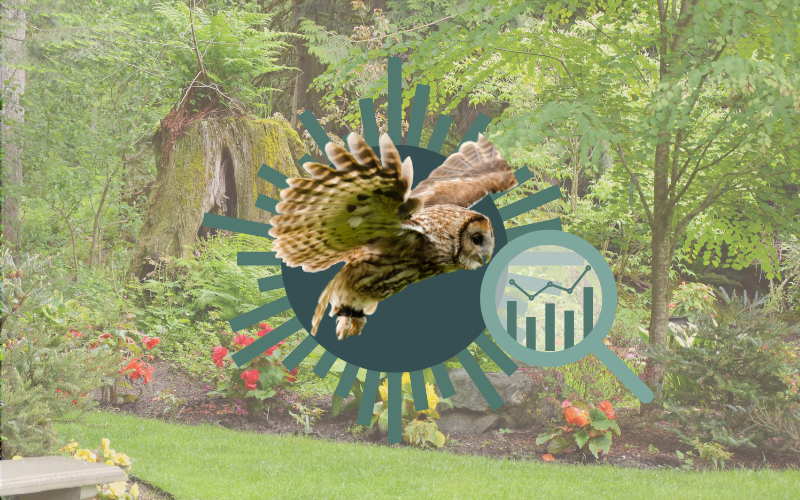As British gardening enthusiasts, we know the pleasure of watching our gardens flourish. However, it’s not just about beautifully blooming roses or perfectly pruned topiaries; it’s about the thriving ecosystem that lies within our plots. The life that buzzes, flutters, and burrows around our cherished plants is as vital to the health of our gardens as sun and soil.
There has been an increased awareness about the importance of biodiversity in our gardens. A garden rich in biodiversity not only creates a healthy and sustainable environment but also significantly contributes to the larger local ecosystem. Monitoring the biodiversity in our gardens is one way we can engage more with nature and understand how our actions impact local wildlife. Here are several traditional and technological methods to observe and increase the biodiversity of your garden.
In-person Monitoring
Traditional monitoring is as much about enjoyment as it is about ecology. You can easily integrate these practices into your usual gardening routine.
a) Visual Surveys and Logs: Keep a diary of the different species you observe in your garden. Note the time of day, the weather, and their behaviour. This can help you understand when certain species are most active and how they interact with your garden.
b) Species Identification: Use field guides to identify unfamiliar birds, insects, or plants. Engaging with citizen science projects, like the RSPB’s Big Garden Birdwatch or the Butterfly Conservation’s Big Butterfly Count, can be extremely rewarding and educational.
c) Insect Traps and Hotels: Setting up an insect hotel or a trap can be an effective way to monitor insects in your garden. Insect hotels, which provide a variety of habitats for insects, can attract a wide range of species and offer an easy way to observe them.
Likewise, simple pitfall traps—small containers buried at ground level—can be used to catch and monitor ground-dwelling insects like beetles and spiders. Just be sure to release any creatures back safely after your observations!
Technological Monitoring
Advancements in technology have provided us with sophisticated tools to observe and measure biodiversity in our gardens. They can offer unique insights that traditional methods can’t.
a) Camera Trapping: Camera traps are motion-activated cameras that capture images of wildlife. They have been instrumental in wildlife research and are becoming increasingly accessible for home use. Placing these in your garden can help identify nocturnal or shy creatures that you may not see during the day.
b) Bioacoustic Monitoring: Bioacoustic devices record natural sounds, which can then be analysed to identify different species. For example, you can monitor the variety of bird calls in your garden or pick up the rustling sounds of hedgehogs. Bioacoustic monitoring can be completed in real-time in the garden thanks to modern Apps which utilise your mobile phone’s microphone. Alternatively, you can set up passive recording devices for comprehensive long-term monitoring, which record at intervals 24-hours a day.
For bat monitoring, handheld devices can be used that detect ultrasonic bat frequencies that would be outside of our audible range. Similarly, passive recording devices can be used to monitor throughout the night.
>> Learn more about passive bioacoustic monitoring with us!
c) Setting Up a Moth Trap: A moth trap is a device that attracts moths with a light source and safely captures them for observation. There are various types of moth traps available for purchase, such as Skinner traps and Robinson traps, which can be especially designed to suit different species and settings.
However, a basic moth trap can also be created at home. A simple setup involves a bright light (a special mercury vapour or actinic bulb is often used) to attract moths, and a structure such as a box with funnels or egg cartons where moths can take refuge until morning.
Engaging with Nature
Engaging with nature through biodiversity monitoring can be a transformative experience for individuals and families alike. It’s an exercise that can be both enjoyable and educational, a pastime that’s as beneficial for us as it is for our gardens.
Imagine the thrill of discovery that comes with spotting a rare bird or identifying a new species of butterfly. There’s a real sense of wonder that comes with recognising that our gardens are home to a rich tapestry of life.

